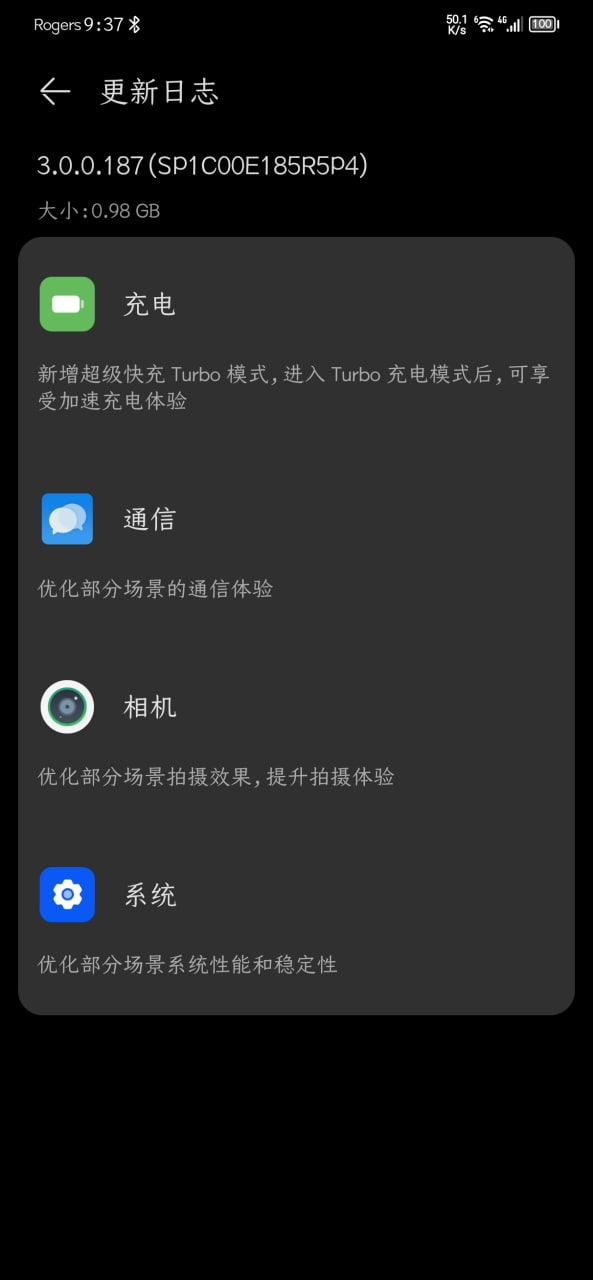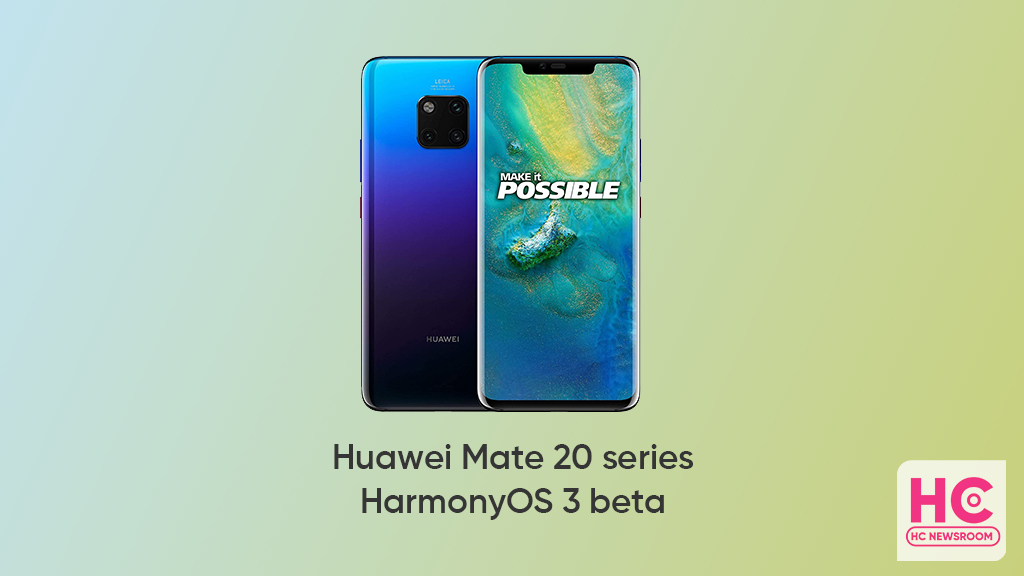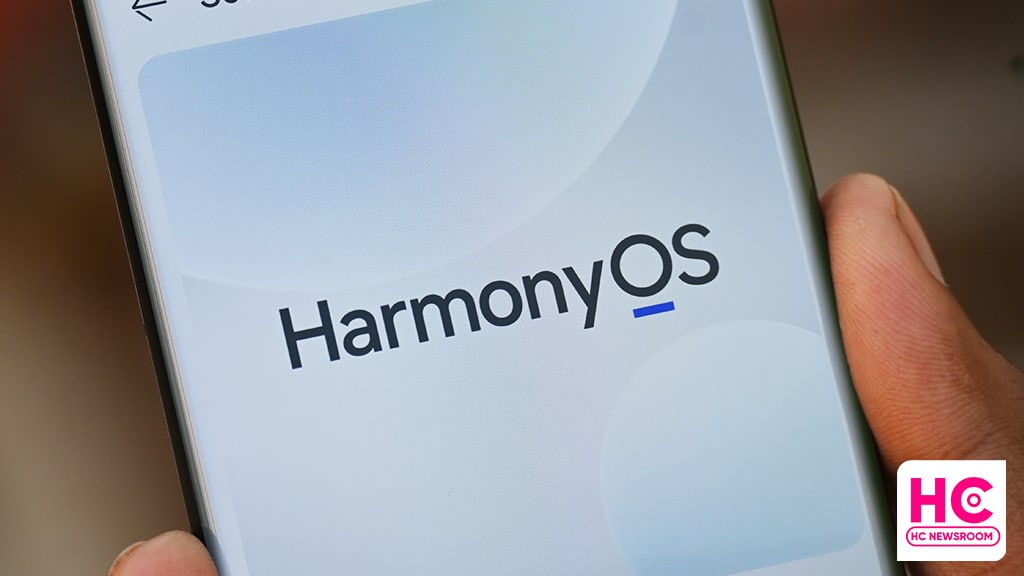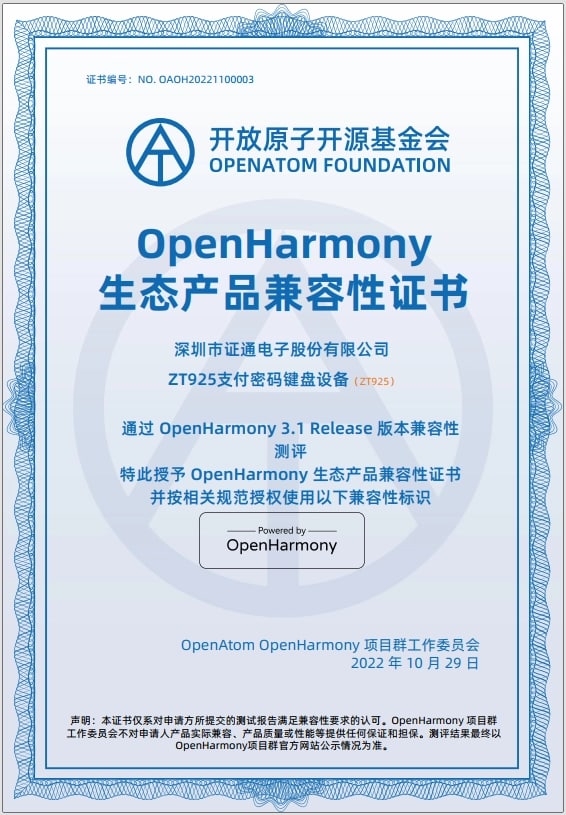Huawei Mate 20 series gets HarmonyOS 3 beta with new features
HarmonyOS 3 Upgrade Schedule: Devices and Timeline
Open source HarmonyOS adds support for ZT925 payment device
Huawei Pocket S grabs December 2022 update
These 4 Huawei Nova models joins public HarmonyOS 3 public beta
Huawei will launch two flagship phones in 2023: Supply Chain
WIKO 5G Huawei Nova 9 SE live image leaked
Huawei Mate 50 RS opens sales on JD
4G is still the way for Huawei next year
Huawei phones will still use Qualcomm chip in 2023
Huawei Nova 9 improves security with December 2022 EMUI update
Huawei FreeBuds 5i gets system stability update
Huawei Mate 20 series gets HarmonyOS 3 beta with new features
December 2022 EMUI update out for Huawei Nova 7 5G
Huawei Pocket S grabs December 2022 update
Download Huawei AppGallery App (12.7.1.300)
Google Play Store 33.6.13 is up in stock
Get the latest My Huawei app [12.1.10.300]
December 2022 Google Play System update brings new changes to digital driver’s license
Google Play Store rules troubling Android users in US
Huawei MateBook D14 SE notebook gets 16GB RAM version
Huawei MatePad SE and Pro 12.6 gets new memory version to Malaysia
Huawei MatePad Pro 10.8 gets November 2022 patch
Huawei is the only PC maker to make growth in Q3 2022 in China
Huawei MateBook 14 1TB version will launch on December 9
Huawei Band 4 with SpO2 opens sale at lowest price
Huawei launches ‘Year of the Rabbit’ FreeBuds earphones engraving service
120 inch virtual screen Huawei Vision Glass goes on sale
Huawei FreeBuds 5i gets system stability update
How’s your Huawei Watch GT 2 smartwatch doing in 2022?
Published
on
By
Huawei is rolling out a new software update for the Mate 50 series smartphones that brings Turbo charge mode. The feature allows you to charge your phone at a faster speed than usual.
A few days ago, Huawei first pushed this feature for the P50 Pro smartphone and it’s now expanding for other flaghip devices.
The Huawei turbo charge feature is rolling out for Mate 50 series users with HarmonyOS 2 software. As it comes with build version 3.0.0.187 and a package size of 0.98 gigabytes.
Currently, the charging rate difference has not been noted but we can expect that this feature is an add to the already available super charge fast charging mode.
Huawei Mate 50 Pro has a built-in 4700mAh battery, supports 66W wired super fast charging, 50W wireless super-fast charging, and 7.5W wireless reverse charging.
Huawei Mate 50 devices use a 66W Huawei super fast charging charger. It can be charged to 20% in 5 minutes, 81% in 30 minutes, and fully charged in 41 minutes.
With this new add-on, press and hold the center of the screen to turn on Turbocharging, which is very convenient. It should prompt notification for the temperature change notification.
Others:
Aside from the turbo charge mode, the update will also improve communications in certain situations. On the other hand, there are new camera improvements for the overall user experience and the quality of images taken in certain situations will be optimized as well.
Furthermore, this firmware update will ramp up the performance so that the device will provide enhanced system capability.
Meanwhile, you should know that Huawei has not announced a turbo charge feature for global devices. However, we’ll keep you posted.
Thanks for the inputs, Thomas Zhao. 
Huawei Mate 40 Pro gets December 2022 EMUI update
HarmonyOS 3 beta rolling for Huawei P30 series
Amy is our firmware and software specialist, she keeps her eagle eyes open for new software rollouts, beta programs, and other software related activities as well as new smartphone launch.
Huawei launches new FusionSolar website
Huawei patent new feature for cross device camera shooting
Huawei Band 4 with SpO2 opens sale at lowest price
Published
on
By
Following the P30 series, Huawei announced the rollout of HarmonyOS 3 first beta for the Mate 20 series. This is a major development for this old flagship lineup as it will now get a brand-new software ecosystem with major improvements.
Huawei is rolling out HarmonyOS 3 beta for Mate 20 series with firmware version 3.0.0.73. It is noted, this rollout is out for the users who participated in the first batch of beta activity.
However, you should also remember that Huawei is sending this beta build gradually among the eligible device owners. Below you can check the Mate 20 models:
- Mate 20 (HMA-AL00)
- Mate 20 (HMA-TL00)
- Mate 20 Pro (LYA-AL00, LYA-AL10)
- Mate 20 Pro (LYA-TL00)
- Mate 20 RS (LYA-AL00P)
- Mate 20 X(4G) (EVR-AL00)
- Mate 20 X(4G) (EVR-TL00)
Closed beta:
The latest rollout comes under the closed beta label and it’ll be followed by public beta after a round of beta OTA software tests. Meanwhile, the stable release may take some time to release among Huawei Mate 20 series users.
Huawei Mate 20 is currently divided into global and Chinese versions. The Chinese version runs HarmonyOS 2 operating system, which was upgraded from EMUI 11. On the other hand, the global version of these models runs EMUI 12.
But the new HarmonyOS 3 upgrade will allow the owners of this flagship to experience a brand feature set.
HarmonyOS 3 beta notes:
- Due to version restrictions, you are required to upgrade to version 2.0.0.270 first, otherwise, you will not receive the latest beta version.
- During the closed beta testing, you have to enable the user experience improvement plan switch (path: Settings-System and Update-User Experience Improvement Plan), which would help the Huawei software team to conduct system and app analysis, fault diagnosis, etc., and continuously improve the quality of the version.
- This update will not delete your data, but it is still recommended that you back up all important data to your PC or cloud before upgrading. Also, confirm that the backup content is complete and valid, otherwise, there may be a risk of data loss.
- Because some third-party applications may not be compatible with HarmonyOS, the third-party application may not work properly after the update. It is recommended that you try to update the apps to the latest version in Huawei AppGallery.
- After the upgrade is complete, the phone may experience heat, lag, or slow charging. This is caused by some self-optimization and adaptation actions performed by the system after the upgrade. Please rest assured that it will recover by itself after a period of time. It is recommended that you charge for 1 hour in your spare time. During the charging period, the system will optimize once to ensure that the mobile phone application is quickly adapted.
- This update needs 8GB of free space, and the installation package will be automatically deleted after the update without taking up storage space.

Published
on
By
After its launch, Huawei shared a jumbo HarmonyOS 3 upgrade schedule that includes smartphones, tablets, smart TVs, and smartwatches. That’s not it, these devices range from the latest to the oldest possible models eligible to download the latest HarmonyOS version including the Huawei Nova 4e.
HarmonyOS 3 is the latest Huawei operating system version and it brings a variety of new additions to the software including a better user interface and optimized performance.
Initially, Huawei began testing the software in closed beta for top flaghip devices such as Huawei P50, Mate 40 series, and other prominent foldable.
Since it is a roadmap, Huawei has scheduled HarmonyOS 3 upgrade plan until 2023. This is quite an extensive roadmap and we’ll explore it right away.
There are three sections of the upgrade timeline:
- Initial timeline (June)
- Q4 2022
- 2023
First, initial rollout:
- Huawei P50
- Huawei P50 Pro
- Huawei P50 Pro Collector’s Edition
- Huawei P50E
- Huawei P50 Pocket
- Huawei P50 Pocket Art Custom Edition
- Huawei Mate Xs 2
- Huawei Mate Xs 2 Collector’s Edition
- Huawei Mate X2
- Huawei Mate X2 4G
- Huawei Mate X2 Collector’s Edition
- Huawei Mate 40
- Huawei Mate 40 Pro 4G
- Huawei Mate 40 Pro
- Huawei Mate 40 Pro+
- Huawei Mate 40 RS Porsche Design Collector’s Edition
- Huawei Mate 40 RS Porsche Design
- Huawei Mate 40E
- Huawei Mate 40E Pro
- Huawei Mate 40E 4G
- Huawei MatePad Pro 12.6-inch 2021
- Huawei MatePad Pro 10.8-inch 2021
- Huawei MatePad Pro 11
- Huawei Smart Screen V65 Pro
- Huawei Smart Screen V75 Pro
- Huawei Watch 3
- Huawei Watch 3 Pro
- Huawei Sound X NEW
- Huawei Sound X 2021
- Huawei Sound X Joy
- Huawei AI Speaker 2e
Q4 2022:
- Huawei P40
- Huawei P40 4G
- Huawei P40 Pro
- Huawei Nova 10
- Huawei Nova 10 Pro
- Huawei Nova 9
- Huawei Nova 9 Pro
- Huawei Mate 30
- Huawei Mate 30 5G
- Huawei Mate 30 Pro
- Huawei Mate 30 Pro 5G
- Huawei Mate 30E Pro 5G
- Huawei Mate 30 RS Porsche Design
- Huawei Mate Xs
- Huawei Nova 10
- Huawei Nova 10 Pro
- Huawei Nova 9
- Huawei Nova 9 Pro
- Huawei Nova 9 SE
- Huawei Nova 8
- Huawei Nova 8 Pro
- Huawei Nova 8 Pro 4G
- Huawei Nova 7 5G
- Huawei Nova 7 Pro 5G
- Huawei Nova 6
- Huawei Nova 6 5G
- Huawei MatePad Pro 10.8 inch
- Huawei MatePad Pro 5G 10.8 inch
- Huawei MatePad 10.8
- Huawei Smart Screen V75 Super
- Huawei Smart Screen V98
- Huawei Smart Screen V55 2021
- Huawei Smart Screen V65 2021
- Huawei Smart Screen V75 2021
- Huawei Smart Screen V85 2021
- Huawei Watch GT 3 Pro 43mm
- Huawei Watch GT 3 Pro 46mm
- Huawei Watch GT 3
- Huawei Watch GT 3 42mm
- Huawei Watch GT 3 42mm
- Huawei Watch GT 2022
- Huawei Watch GT Runner
2023:
- Huawei P30
- Huawei P30 Pro
- Huawei P20
- Huawei P20 Pro
- Huawei Mate 20
- Huawei Mate 20 Pro
- Huawei Mate 20 RS Porsche Design
- Huawei Mate 20 X
- Huawei Mate 20 X 5G
- Huawei Mate X
- Huawei Mate 10
- Huawei Mate 10 Pro
- Huawei Mate 10 Porsche Design
- Huawei Mate RS Porsche Design
- Huawei Nova 8 SE
- Huawei Nova 7 SE Vitality Edition
- Huawei Nova 7 SE 5G
- Huawei Nova 7 SE 5G Vitality Edition
- Huawei Nova 7 SE 5G Lohas Edition
- Huawei Nova 6 SE
- Huawei Nova 5
- Huawei Nova 5 Pro
- Huawei Nova 5i Pro
- Huawei Nova 5i
- Huawei Nova 5z
- Huawei Nova 4
- Huawei Nova 4e
- Huawei Enjoy 50
- Huawei Enjoy 50 Pro
- Huawei Enjoy 20 5G
- Huawei Enjoy 20 Pro 5G
- Huawei Enjoy 20 Plus 5G
- Huawei Enjoy Z 5G
- Huawei Enjoy 10S
- Huawei Enjoy 10 Plus
- Huawei Enjoy 9s
- Huawei Enjoy 9 5G
- Huawei Enjoy 8
- Huawei MatePad 10.4 2022
- Huawei MatePad 10.4 2022 Special Edition
- Huawei MatePad 10.4
- Huawei MatePad 5G 10.4

Published
on
By
Zhengtong Electronics has made a financial payment scenario and launched a payment password keyboard device ZT925 equipped with OpenHarmony, the open-source HarmonyOS operating system.
According to the information, Huawei and OpenAtom foundation are working together to increase industry partners to adopt the open-source HarmonyOS named OpenHarmony.
The ZT925 payment device has also passed the OpenHarmony 3.1 Release version compatibility evaluation and received the OpenHarmony ecosystem product compatibility certificate.
Adding to this, the device can be equipped with different forms of master devices by applying OpenHarmony’s distributed soft bus technology, so as to adapt to different application scenarios.
The ZT925 electronic payment device integrates financial components such as a password keyboard and a contactless card reader to form a minimal secure payment suite that provides financial payment functions externally.
With OpenHarmony 3.1 Release version, the device has its own distributed networking capabilities. It can automatically discover and complete identity authentication and automatic networking with the main device and expand the financial payment feature of the main device.
After the ZT925 and the main device are powered on respectively, they form a star-shaped network with a stable topology according to their respective preset policies. 
The user handles the business on the main device and transfers the transaction information to the ZT925 through the OpenHarmony soft bus technology in the financial payment transaction link. The indicator light of the remote terminal ZT925 starts to flash and enters the state of financial business processing, responding to the customer’s card swiping and password input on the ZT925.
So far, the main device and ZT925 have completed the payment transaction through the remote linking process. This time, the terminal product makes payment-related security components and general components into independent components, so that the terminal form fits better with the scene and improves the overall portability.
The terminal equipment manufacturers further divide labor, professional security payment manufacturers focus on the development of security components, industry manufacturers focus on general components and business experience, and aggregate different security components through specified strategies to form a super terminal on the merchant side. This contributes to Improving the payment experience and security.
More importantly, for the update of the mainline version of the terminal operating system, the terminals interconnected through the OpenHarmony soft bus only need to do differentiated security certification to quickly iterate industry equipment.
Traditional financial terminals use core boards and extended backplanes to assemble security components such as PIN pads and common components such as display screens and cameras, which cannot well meet the fragmented needs of the industry.
If the scenario needs to add a display screen, it will involve the change of the whole machine. Now, financial components such as PIN pads and card readers are made into independent payment security suites, and the financial part is decoupled.
The OpenHarmony soft bus technology is equipped with different forms of the main equipment to jointly carry and display financial services and help the development of financial services.
OpenHarmony soft bus technology on financial terminals, Zhengtong Electronics starts from the practicality, reliability, security, and scalability of financial terminals, improves the business support capabilities and intelligence level of financial terminals, and meets the needs of fragmented industries.
Furthermore, Zhengtong Electronics has enriched the OpenHarmony soft bus control technology by introducing customized networking strategies to improve the efficiency of financial terminal reconstruction.
Copyright © 2022 Huaweicentral.com